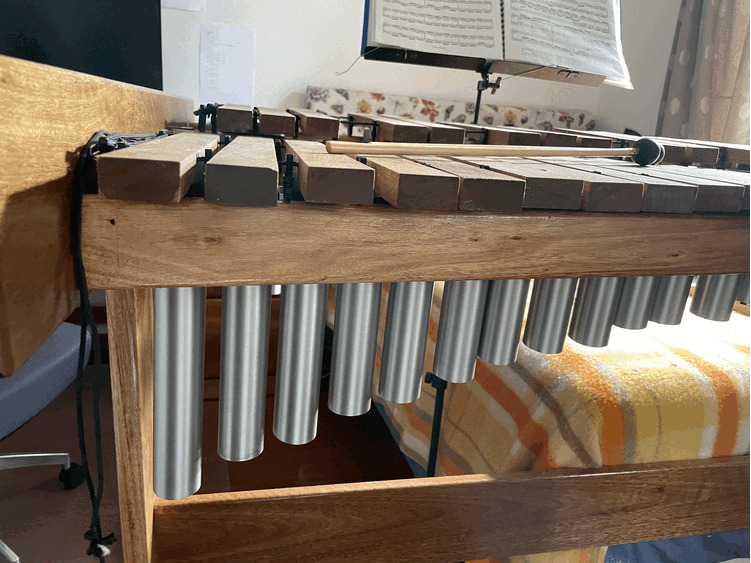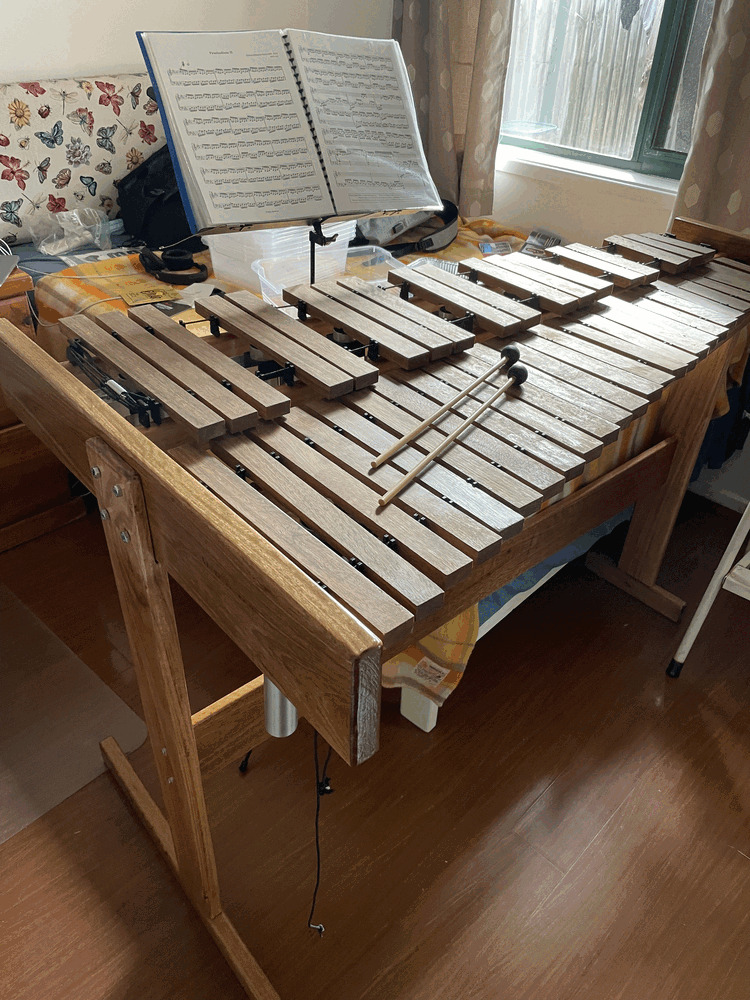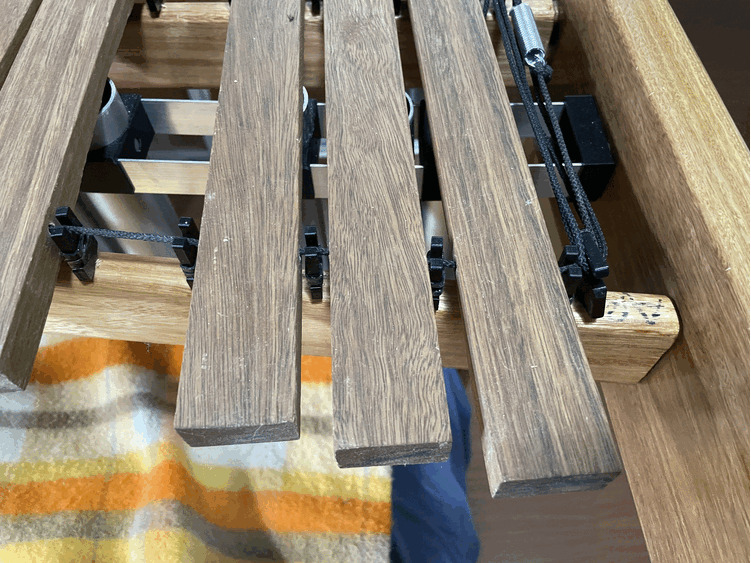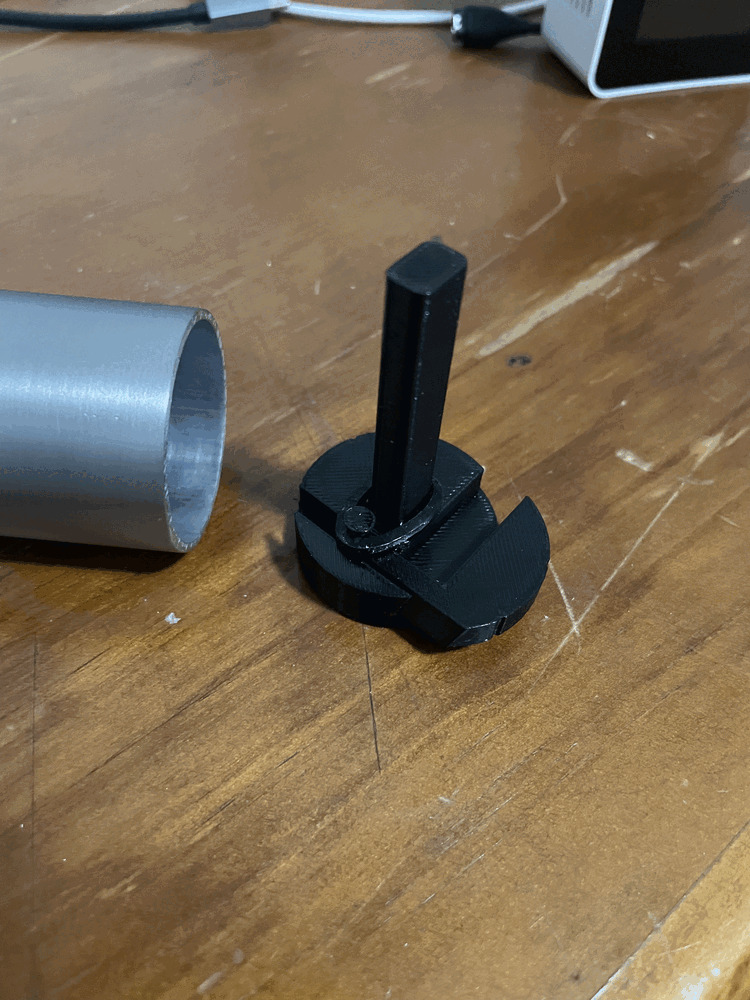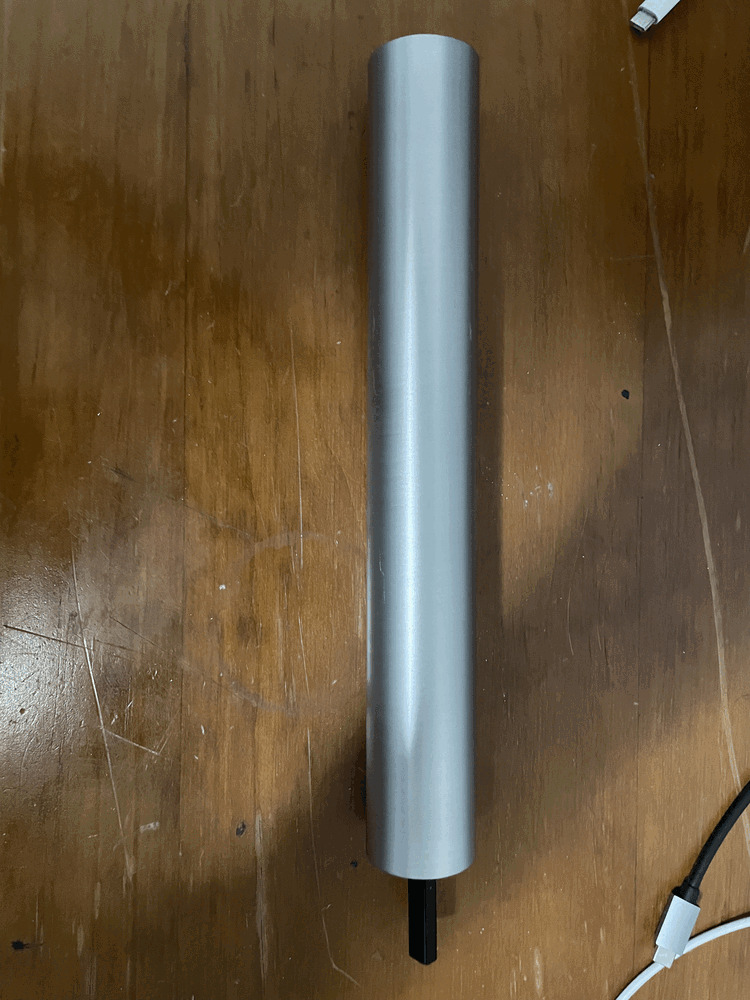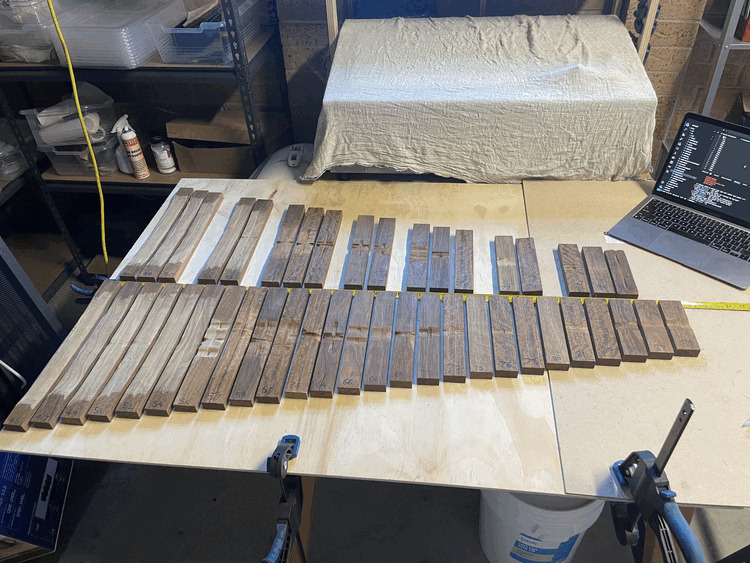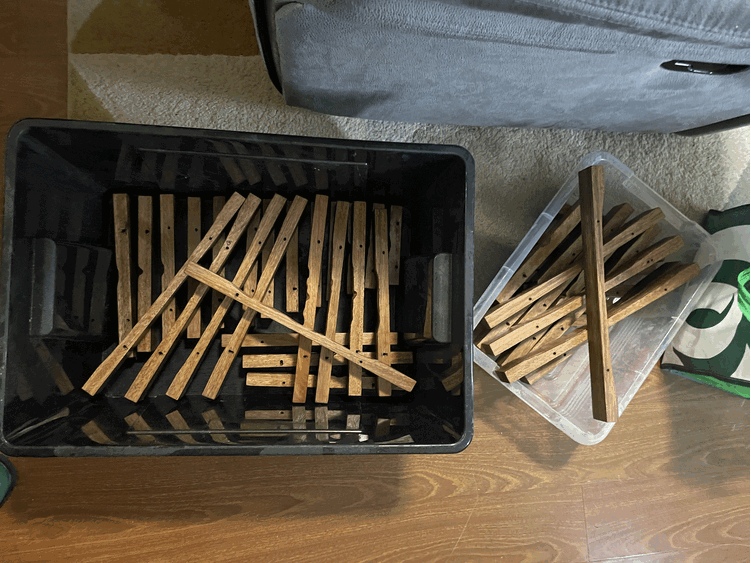Xylophone
I constructed this xylophone in mid-2024. All woods are Australian (I think they are all local to Sydney too). I used spotted gum (Corymbia maculata) for the tone bars. Spotted gum is a very dense and hard wood and its Janka hardness rating is similar to Honduras rosewood, which is traditionally used for tone bars.
The Spotted gum doesn’t have as much sustain as Honduras rosewood. In the future, I would like to continue to try different Australian woods.
The frame is made of two other Eucalyptus species. The resonators are brushed aluminium.
The posts, resonator stoppers and resonator hangers are 3d-printed. I used ABS for some pieces and PETG for others, but I think both work equally well here. I originally printed the pieces from PLA, but given its lower glass transition temperature, I was worried about the pieces warping in the sun or if left in a car for any period of time.
I designed and printed an adjustable resonator stopper. This stopper can be adjusted easily and fairly precisely. It uses a small elastic band to push out an extra piece, which in turn provides extra pressure on the inner wall.
It’s difficult to get this kind of adjustable stopper with a friction fit alone. Other adjustable stoppers often use a screw that can be tightened to increase the pressure on the inner wall, forcing it to stay. When the screw is loosened, it allows the stopper to move freely. This design is somewhat simpler. I haven’t had any issues yet, but it’s possible that it wouldn’t stand up to rough treatment as well as the screw design, like transit or earthquakes.
To tune the bars, I tuned the harmonics by cutting a curve into the underside of the bar. I implemented Timoshenko beam theory to calculate the ideal shape of the curve. I then used a small CNC machine (a cheap Vevor 3018) to cut an approximation of the curve:
The following two videos show a bar being struck before and after rough tuning:
To me, the tuned bar has a definite pitch and pleasant timbre, while the untuned bar is somewhat less definite.
After rough tuning with the CNC machine, I finished the tuning with a trim router and fine-tuned with a file.
